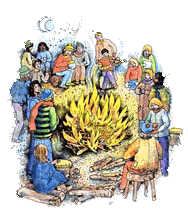|
Toward a New Green Earth: Mark A. Schroll |
|
Summary Everyday on the news we bear witness to the signs of environmental decay, predictions of annihilation, increasing apathy, and a general loss of hope for the future in our youth; yet humankind has been ignoring these signs for at least 10,000 years. Growing increasingly numb to the cries of our Earth and its people, humankind has retreated further and further into an artificial world of fantasy maintained by consumerism and technology. Just mentioning this fact makes us feel uncomfortable, because it forces us to acknowledge our fears that our industrial-age dreams have failed to come true for the vast majority of humankind. But we cannot allow ourselves to contemplate this acknowledgment too long, because then humankind would have to face the possibility that the industrial-age will one day come to an end. Suggesting that humankind too will come to an end, unless it is able to metamorphosis and invent a new way of being. How have you come to grips with this predicament? The book Toward A New Green Earth: The Call For An Integral Science is my attempt to answer this question. The following is drawn from chapter 1 of Mark's book. The entire book is available by going to the ikosmos site, and following the link "integral nature." |
In my attempt to answer the call for a more integral science, I have come to a better understanding of the preceding convoluted statement by William James. Realizing, as I sought to articulate the call for a more integral science, that its definition was a hopeless irony: a study of opposites, a koan to be contemplated, and a goal as elusive as the mythical Irish myth of finding a pot of gold at the end of the rainbow. This is because our attempt to provide definitions of the ideas, hopes, fears, and visions that are calling us to create a new green earth serve as an experiential method useful in helping us become aware of our human arrogance; because nature only reveals to us the questions that we ask of it. Indeed we remain trapped in this state of contradiction until we realize that our theories and conceptual definitions will always be limited, no matter how we attempt to frame them, because all of our methods of inquiry are nothing more than mirrors and techniques of self-understanding that provide us with reflections of who we are.
But this kind of apocalyptic thinking was not widespread in 1964, especially for dreamers like me whose thoughts were of space travel; ideas that were nurtured by my reading books like "We Can Go To The Moon." This was the beginning of the space race, initiated by the USSR's launching of Sputnik into orbit around the Earth in 1957. It was a time when everyone would crowd around their TV sets to watch, with wonder and amazement, the extraordinary sight of a space launch. The lift-off of each rocket bore with it the national consciousness of the United States and its ideological image as leader and protector of the free world. Today space shuttle launches have become so common place that they occur almost without notice. I might have gone on to be a rocket scientist or an astronomer, merging these interests with environmental studies and archeology, had it not been for a life-altering experience in 1964 that shifted my attention to the study of "weird science." Today (as we shall learn) this "weird science" has formed itself into the Society for the Anthropology of Consciousness, the Association for Transpersonal Psychology, and is finding expression within ecopsychology and indigenous science. Together these movements provide us with a way of understanding the call for a more integral science. The Anthropology Of Consciousness According to Geri-Ann Galanti, the Anthropology of Consciousness can trace its roots "to a symposium organized by Joe Long and Stephan Schwartz for the 1974 American Anthropology Association (AAA) meetings in Mexico City" (Galanti, 2000). John Baker adds that the next phase in the history of the Anthropology of Consciousness took place during "two sessions on anthropology and parapsychology organized by Long for the 1978 AAA annual meeting in Los Angeles" (Baker: 1, 2000). Due to the efforts of Galanti (who attended these sessions, becoming familiar with Long's research), a mailing list of people interested in Long's sessions was compiled and Galanti began a newsletter titled "Newsletter for the Anthropological Study of Paranormal and Anomalous Phenomena." Twelve years later Galanti's tireless efforts to establish and maintain this focus group was rewarded when this group became a unit of the American Anthropology Association in 1990, renaming itself "The Society for the Anthropology of Consciousness (SAC)." SAC's multidisciplinary group of members support a radical methodological pluralism born out of their personal encounters with prejudice: indeed just mentioning the word "parapsychology" creates a climate of skepticism and disrespect that is carried over into the professional censorship of parapsychological research; consequently SAC recognizes the importance of diversity, or more precisely the need to promote attitudes of tolerance toward a variety of over-lapping and sometimes contradictory perspectives. SAC's emphasis on a radical methodological pluralism also includes recognizing the importance of the nonhuman world. In his essay "Mind On Fire," Jurgen W. Kremer asks us: "Is there a way for us to walk on this land not as a colonizer, but as a person capable of remembering an ancestral conversation?" (Kremer: 47, 1997a). Interspecific and intraspecific "violence becomes easier once we no longer participate in this conversation (especially large-scale and indirect violence)" ( Kremer: 47, 1997a). More specifically, putting an end to humankind's history of violence and incoherence requires us to reclaim our primordial ecological consciousness, tracking the cycles of nature: astronomical cycles, migrations, and how we live and experience ourselves in the weave of the loom of life; "weaving [our] mind through the thought of the water, the tree, the plant, the animal, the earth, the stars" (Kremer: 12, 1997b). It is this emphasis on diversity and tolerance, as we struggle to remember our ancestral conversation, that demonstrates SAC's contribution to the call for an integral science. Indeed "today," says Baker, "SAC's multidisciplinary perspective promotes "an active investigation into a broad range of consciousness phenomena, methodological and theoretical orientations" (Baker: 2, 2000). {1}
But many others reading these words have yet to receive and experience this blessing of wholeness. Still hurting, these prisoners of our "skin encapsulated egos" continue to suffer from a profound dissociation between self and other, psyche and earth. We who have begun to heal need to find a way of sharing our blessing with those who are less fortunate. David Bohm and others have suggested that one way this healing can begin is by sharing our feelings of broken-ness through the process of dialogue with others who are also seeking wholeness (Bohm, 1993). This is the real starting point for those of us involved in SAC, a theme we will periodically revisit throughout this book; whereby it is up to those of us who have already begun this process of "pulling ourselves together" to find some means of helping others who have yet to experience this remembrance of our original ecological wholeness. One way of doing this is to help others understand what "remembering our ancestral conversation" really means. In other words, how is it possible for us to truly remember the language of this ancestral conversation?; because those of us who have yet to experience this "felt sense of commonality" and empathy with all natural systems lack the experiential means of knowing what this question is asking. Indeed those of us whose worldview has been influenced by the philosophical framework of EuroAmerican science will scoff at this question, perceiving it to be nothing more than a meaningless word game.
It is this focus on the study of shamanism, indigenous methods of healing, and the reclaiming or remembering of our primordial ecological wholeness that demonstrates SAC's commitment to reminding people that all of us have indigenous roots. "With this remembrance," as Kremer tells us, "comes the grief for what has been lost and the experience of the pains which Eurocentered cultures have inflicted through colonialism, imperialism, genocide . . . witchhunts, ecocide, and so on" (Kremer: 188, 1994). But humankind has been prevented from getting in touch with this sense of grief, which has kept us from healing ourselves--keeping us trapped in this state of consciousness--because of the pervasive influence of EuroAmerican culture's collective shadow on our attitudes and resulting behavior. Theodore Roszak agrees with this observation, telling us in his foreword to Ralph Metzner's book Green Psychology: Transforming Our Relationship To Earth (1999), that it has been a deliberate conspiratorial act by "the best and most authoritative minds in our society to keep human nature as distant, different, and disengaged from nature as possible" (Roszak: viii, 1999). Humankind's longing to heal this grief represents another expression of our desire to free ourselves from the collective shadow that holds us prisoner within our contemporary epistemological frameworks, a framework that has shaped and formed EuroAmerican science's prejudice toward the study of parapsychological phenomena. This prejudice has served to create a climate of fear and skepticism toward people who possess the ability to access states of anomalous cognition (like a shaman's), because the existence of such anomalous cognition reveals the limits of EuroAmerican science. This prejudice has resulted in the belief that anomalous cognition represents some-kind-of-special-sensory ability beyond that of ordinary people. Many anthropologists of consciousness (such as Stanley Krippner, Ralph Metzner, Terence McKenna, Holger Kalweit, and others) are continuing to investigate the degree of truth associated with this claim that shaman's possess some-kind-of-special-sensory ability; it is also worth pointing out that there are other ways of understanding how it's possible to hear the voice of the earth without needing to possess any special-sensory-ability. Just by their very existence, natural landscapes, rivers, trees, plants, and animals are able to serve as "triggering devices" that assist us in awakening our ancestral memories. Using this heightened sensitivity and awareness of all natural systems provides shaman's (and the rest of us) with an ability to free-associate and remember. Consequently, it is possible for all of us to hear the voice of the earth without any kind of special-sensory-ability beyond that of "ordinary consciousness," by learning to read the language of myths, dreams and archetypal symbols. Transpersonal Psychology
Understanding the call for a more integral science includes Transpersonal Psychology - a field that has grown from many roots and which continues to be in a state of constant revision. Consequently to exclude mentioning any of its diverse interests limits and confuses our understanding of the transpersonal orientation. Like SAC, transpersonal psychology has placed considerable emphasis on the study of consciousness, which provides us with a way of defining its orientation, and at the same time demonstrating why its definition is so elusive; because the word "consciousness" is also very ambiguous, and therefore necessitates clarification. Krippner agrees, telling us that he has:
Thus it was a fateful decision when transpersonal psychology chose to proclaim that one of its many areas of concern included the study of parapsychological phenomena. Indeed transpersonal psychology was rejected divisional status within the American Psychological Association (APA) because of this choice to include the study of parapsychological phenomena as part of its interests. Moreover there are a variety of over-lapping interests between SAC, Transpersonal Psychology, ecopsychology and indigenous science that we will come to see as strands of a single story, which is struggling to unfold, break-free and be told.
Ecopsychology And Indigenous Science My continuing efforts to define ecopsychology and indigenous science have led me to understand that its roots extend into the very depths of the evolutionary process that gave birth to human consciousness. The saga of humankind's evolutionary origins is therefore intertwined with ecopsychology and indigenous science, which are arbitrary names that have emerged as focal points due to humankind's propensity to create order out of chaos by naming the elements of our experience. The time I have spent in wilderness experiences has helped to liberate me from this propensity, and replace it with a gestalt orientation to environmental studies and human systems. Leading me to realize that gestalt psychology (whose studies of figure and ground brought us the understanding that neither of these perceptual references are primary, instead perception is a dynamic process, as we constantly shift the focus of our attention between figure and ground) reflects a model similar to what has become widely known as systems theory (Capra, 1996), the Gaia hypothesis (Lovelock, 1988), and what Humberto Maturana and Francisco Varela are calling autopoiesis (Capra, 1996; W. Fox, 1990). Meanwhile, the definitive history of ecopsychology and its relationship to indigenous science has yet to be written. This Chapter represents my own ongoing efforts to write such a history, which has evolved into the sub-theme of "Toward A New Green Earth." It is my interpretation of ecopsychology and indigenous science that these areas of focus represent transitional movements, co-evolving with transpersonal psychology and SAC into a more integral science; whereas ecopsychology is EuroAmerican science's way of attempting to heal its incoherence through its remembrance of indigenous wisdom. Brief History Of Ecopsychology
The Tao that can be named Lao Tzu Ecopsychology is one word among many names, but for some reason it has gathered momentum instead of others. Warwick Fox (whose orientation to this discussion grew out of environmental ethics and the deep ecology movement) goes into this problem of what's in a name in Chapter 1 of his book Toward A Transpersonal Ecology, 1990.
One of the many paths of ecopsychology's origins can be traced to Robert Greenway, who (while serving as a writer for Abraham Maslow) coined the term psychoecology in 1963 in an essay he wrote at Brandies University, Boston
(Greenway, 1994, 1999). That same year Greenway became the founding dean of Franconia College in the mountains of New Hampshire, continuing to explore the relationships between humanistic psychology, the farther reaches of human-nature (which later morphed into transpersonal psychology) and psychoecology. Greenway began teaching courses in psychoecology and the then-nascent field of transpersonal psychology at Sonoma State University, in 1968
(Greenway, 1994, 1999). But Greenway's research raised little attention until Elan Shapiro, one of Greenway's graduate students, formed a psychoecology discussion group that met every other week in Berkeley in 1989
(Greenway, 1999;
Scull, 1999). Besides Shapiro, early members of this group included Mary Gomes, Alan Kanner, Fran Segal, and others (Greenway, 1994; Scull, 1999). Greenway was invited to participate in these discussions. The reputation of this group eventually attracted the attention of Theodore Roszak in 1990, who asked to attend its meetings
(Scull, 1999). This inspired Roszak to write an essay in ecopsychology, a term he preferred over Greenway's psychoecology. This essay eventually reached book length proportion, whose title became The Voice of the Earth
(Roszak, 1992). This inspired Greenway to suggest his own definition of ecopsychology,
In late 1993 Roszak and Metzner came to agree that ecopsychology should not be viewed as an emerging discipline within psychology (Metzner, 1993a, 1993b). Instead ecopsychology should be understood as a critique of social science and can be more widely characterized as a wide-ranging critique of EuroAmerican science. This brings us full circle back to the call for a more integral science. Integral science embraces a revolution of ethics, the re-emergence of shamanic practices, indigenous traditions of knowledge, the use of sacred visionary plants, and the growing edges of a more inclusive worldview.
So where do we start? Metzner provides us with an answer to this question in his book
The Unfolding Self: Varieties of Transformative Experience (1998), telling us that creating the catalyst to initiate this critical inquiry calling out for a more integral science will need to begin with two important steps:
We, in other words, possess within us the catalyst that will be necessary to initiate this transformation of consciousness. Consequently the first step toward initiating our metamorphosis from grub to butterfly is the need to empower ourselves by changing the stories that we tell about ourselves. Metzner first began to articulate these and similar conclusions in his book "Opening to Inner Light" (1986).
Nevertheless, there are those of us who believe so completely in our current economic models of material progress--in living life as a grub - that we cannot even accept states of consciousness beyond this stage of human evolution. Metzner has suggested that the sinking of the Titanic may provide a metaphor to help us understand why any of us would choose to deny that the EuroAmerican colonial worldview is breaking down (and why the metamorphosis from grub to butterfly is essential for human evolution to continue, lest we persist in our grub-like consumption until planet Earth can no longer support life)
(Metzner, 1993a).
Recalling the story of the Titanic, Metzner explains that upon striking an iceberg the Titanic's engineers assessed the damage and reported to the Captain that the ship was going to sink. The good news was that everyone aboard the Titanic would have several hours available to get into the lifeboats. The Captain, upon receiving this report, announced this news throughout the ship. Strangely, many of the passengers responded to this message like it was an inconvenience to their pursuit of social games and future business meetings. Besides, the passengers reasoned, if these reports that the ship is going to sink are true, we still have several hours to get into the lifeboats: so let's enjoy the time we have left to party on this fabulous ocean voyage, keeping in mind we may need to run to the lifeboats to save ourselves. The consequences of this refusal to go to the lifeboats necessitated that the Titanic's crew continue to maintain the services of the ship, which also meant denying lower paying passengers access to the upper decks--even as the water began to rise--because they had not paid the first class fare.
Similarly throughout planet Earth it is those of us who cannot afford to pay the first class fare that end up living next to incinerators, toxic waste dumps, and nuclear power plants. Indeed it is the poor who truly suffer the excesses of international corporations, whose definition of progress, as well as their luxurious living conditions, continues to provide them with the ability to deny the role that humankind's economic and technological orientation is having on the environmental sustainability of all natural systems. The source of humankind's denial, or better yet dissociation, and the reasons behind psychology's continued conspiracy have been thoroughly examined by Metzner in
Green Psychology.
In defining his own approach to ecopsychology, Metzner tells us in the introduction to his book Green Psychology (1999) that:
This is why that ecopsychology's capacity for transformation should not be confined solely to the field of psychology; instead ecopsychology should be considered a multidisciplinary coalition attempting to envision an integral science, a science of letting things be, thereby allowing us to reclaim our sense of wonder, aesthetic appreciation, and our co-evolutionary awareness of sacred communion with the natural world. It is, according to Metzner: "An expansion and revisioning of psychology in an attempt to take the ecological context of human life into account"
(Metzner, 1995). Greenway agrees with Roszak and Metzner, pointing out that:
Joseph Meeker's book
The Comedy of Survival (1997) adds another link in our search for ecopsychology's origins, which emerged through the work of scholars seeking an environmental ethic. The Comedy of Survival represents Meeker's founding work in literary ecology and ecocriticism, which demonstrates the relationship between the literary arts and scientific ecology, especially humankind's consideration of comedy and tragedy. Reminding us that adaptive behaviors (comedy) promote survival, whereas tragedy estranges us from other life forms. This thesis rests on Meeker's study of comparative literature, his work with biologist Konrad Lorenz, and his work as a field ecologist in the National Park service in Alaska, Oregon, and California.
John Tallmadge has also become active in ecocriticism, serving as president of the Association for the Study of Literature and the Environment (ASLE) in 1997
(Tallmadge, 1999). Tallmadge explains that:
In the years leading up to the formation of ASLE and ecocriticism, Tallmadge's personal journey was guided by the question: "how should human beings relate to the world?"
(Tallmadge: 15, 1999). Tallmadge came to a deeper understanding of this question in his essay's "Saying You to the Land"
(Tallmadge, 1981), and "Anatomy of a Classic"
(Tallmadge, 1987), through his realization that wilderness is actually a state of consciousness.
We are given new eyes to see this emerging ecopsychological perspective (that wilderness is actually a state of consciousness) and its relationship with indigenous science in James A. Swan's book
Sacred Places: How The Living Earth Seeks Our Friendship (1990). In particular, Sacred Places explores humankind's relationship with all natural systems. Drawing from his study of environmental psychology, conservation education, resource planning, and field work with various native cultures, Swan demonstrates that sacred places have a value that transcends time and culture--and must be preserved for generations to come. Swan includes a regional guide to easily accessible sacred places on public lands throughout the USA.
Ecopsychology's Relationship To Indigenous Science
What no home now?
Tim Masters, Lincoln, Nebraska 1998
Whenever I listen to Tim Master's song "Home" my imagination creates scenes of war-torn nations, shattered families, people struggling for social justice, and the need to remember my own fragmented genealogical origins. Kremer sums up this loss of home in his essay
"Millennial Twins: An Essay Into Time And Place" (Kremer, 2000), whose thoughts on this matter are worth quoting at length:
In an attempt to begin the process of healing this genocide, Kremer reminds us of the essential importance that remembering the indigenous names of places, plants and stories of all cultures has upon our psyche, pointing out it has been humankind's cultural amnesia of indigenous science that has created the psycho-historical space where the currently dominant social, economic, political theories, policies, and practices could grow, allowing humankind's most powerful and wealthy to feed their grub-like egos; meanwhile denying that the consequences of this grub-like consumption of planet Earth's natural systems has resulted in planetwide ecocide (destroying the natural habitat of all the worlds indigenous populations and the bioregional coherence of all natural systems).
Kremer's research has in countless ways continued to influence my understanding of indigenous science and its relationship to ecopsychology in an ever deepening meditation since I began reading his work in 1992a, beginning with his essay
"The Dark Night of the Scholar: Reflections On Culture and Ways of Knowing." My interest in uniting ecopsychology and indigenous science finds resonance with Kremer's personal "attempt to speak from a recovering indigenous perspective"
(Kremer: 41, 1996b).
Ecopsychology is therefore fundamentally intertwined with indigenous science, which Roszak refers to as "Stone age psychiatry;" telling us: "The wisdom of indigenous peoples is of vital importance to ecopsychology"
(Roszak: 1, 1994). Many mainstream anthropologists and archeologists tend to shrug off the importance of what Roszak refers to as stone age psychiatry, choosing to regulate the knowledge of indigenous peoples to the well established categories within EuroAmerican science. Countering conventional wisdom, Kremer suggests that in doing this, EuroAmerican science has actually prevented our ability to critically examine the contributions of our ancestral lineage; pointing out: "Native or indigenous or tribal people's have had for millennia a practice of lived knowing that can legitimately be called scientific - and these indigenous sciences continue to exist among the surviving indigenous people"
(Kremer: 2, 1996a).
In seeking to reclaim his own genealogical ancestry, Metzner has thoroughly explored Norse mythology and its relationship to ecopsychology and indigenous science in his book
The Well of Remembrance (1994). This book's unique contribution allows us to investigate one of the many paths toward creating a unity between intellect and emotion, psyche and earth, by examining the earth wisdom myths of northern Europe. These myths are part of the religious heritage of people who are Scandinavian, Swiss, German, Dutch and Anglo-Saxon. Our examination of these myths is not an attempt to exclude any race or ethnic group. Instead I believe these myths, all myths, all spiritual traditions need to be available for anyone, any culture, who are seeking to authentically investigate and rediscover them. Indeed we are going to need some kind of re-invention of the human if we are going to insure the evolutionary continuation of our species.
Meanwhile our need for environmental awareness and the technical knowledge of how to sustainably manage nature's resources remains a growing topic of concern. In spite of this awareness, our possession of greater knowledge and technical skill does not guarantee that we will act differently toward nature. Besides acquiring the knowledge of how to live sustainably, we need the motivation to put this greater environmental awareness into practice. We need an environmental ethic, or an ecological worldview, to guide our thoughts and our actions. The Well of Remembrance offers us one of many ways to begin conceptualizing this ecological worldview through its image of a New Green Earth rising from the ashes of the industrial age. This image of a New Green Earth, whose awakening of Gaia consciousness through our use of sacred visionary plants, will take us to the edges of our epistemological horizon: opening humankind's doors of perception to a more inclusive, co-evolutionary, sustainable worldview.
Notes
Bibliography
Baker, J. (2000).
The history of SAC.
Bohm, D. (1993). "Science, spirituality, and the present world crisis." ReVision, 15 (4), Spring, 147-152.
Capra, F. (1996). The Web Of Life: A New Scientific Understanding Of Living Systems. New York: Anchor/Doubleday Books.
Carson, R. (1962). Silent Spring. New York: Fawcett Crest Books.
Devall, B. (1981/82). "Review of John Muir and his legacy: The American conservation movement." Humboldt Journal of Social Relations, 9 (1), 172-197.
Drury, N. (1989). The Elements Of Shamanism. Bridport, Dorset: Element Books.
Fox, S. (1981). John Muir And His Legacy: The American Conservation Movement. Boston: Little, Brown.
Fox, W. (1990). Toward A Transpersonal Ecology: Developing New Foundations For Environmentalism. Boston: Shambhala.
Galanti, G-A. (2000, June 13). Personal communication.
Greenway, R. (1994, May 24). Untitled comments during the Symposium: Deep Ecology and Ecopsychology. Organized and moderated by Ralph Metzner, which included comments from David Abrams, Mary Gomes, Eunice McCarthy, Arne Naess, Bron Taylor, Wendy Sarkissian, and others. Presented at the 13th International Transpersonal Psychology Conference "Toward Earth Community: Ecology, Native Wisdom and Spirituality," Great Southern Hotel, Killarney, Ireland. An audio tape of this presentation is available from Conference Recording Service, 1308 Gilman St., Berkeley, CA. 94706.
Greenway, R. (1999).
"Ecopsychology: A Personal History."
Gatherings, 1, (Winter).
James, W. (1882). "Subjective Effects Of Nitrous Oxide." Mind, 7, 186-208. Reprinted in Charles T. Tart (Ed) Altered States of Consciousness. Garden City, N.Y.: Doubleday and Company, Inc., pp. 367-370, 1969.
Kremer, J. W. (1992a). "The Dark Night Of The Scholar: Reflections On Culture And Ways Of Knowing." ReVision, 14 (4), 169-178.
Kremer, J. W. (1992b). "Whither Dark Night Of The Scholar? Further Reflections On Culture And Ways Of Knowing." ReVision, 15 (1), 4-12.
Kremer, J. W. (1994). "Seidr Or Trance? Toward An Archaeology Of The Euro-american Tribal Mind." ReVision, 16 (4), 183-191.
Kremer, J. W. (1996a). "Indigenous Science: Introduction." ReVision, 18 (3), 2-5.
Kremer, J. W. (1996b). "The Shadow Of Evolutionary Thinking." ReVision, 19 (1), 41-48.
Kremer, J. W. (1997a). "Mind On Fire." ReVision, 19 (3), 42-48.
Kremer, J. W. (1997b). "Transforming Learning Transforming." ReVision, 20 (1), 7-14.
Kremer, J. W. (2000). "Millennial Twins: An Essay Into Time And Place." ReVision, 22 (3), 29-42.
Krippner, S. (1992). "Bridging Realities: A Challenge For The Inner Shaman." ReVision, 14 (4), 168.
Lovelock, J. (1988). The Ages Of Gaia: A Biography Of Our Living Earth. New York: Bantam Books.
Masters, T. (1998). Home. Digital Bitch Shifter. Lincoln, NE.: Guarana Records.
Meeker, J. W. (1997). The Comedy Of Survival: Literary Ecology And A Play Ethic. (3rd ed.). Tucson, AZ.: The University of Arizona Press.
Metzner, R. (1986). Opening to inner light: The transformation of human nature and consciousness. Los Angles: Jeremy P. Tarcher, Inc.
Metzner, R. (1993a, August 28). "Ecology And Transpersonal Psychology." A two-hour conversation forum with B. Keepin, T. Roszak, I. Serlin, R. Walsh and moderated by R. Metzner, held at the 25th Anniversary Convocation of the Association for Transpersonal Psychology, Asilomar Conference Center, Pacific Grove, California. An audio tape of this forum is available from Conference Recording Service, 1308 Gilman St., Berkeley, CA. 94706.
Metzner, R. (1993b). "Review Of Theodore Roszak's Book The Voice Of The Earth." ReVision, 16 (2), 91-93.
Metzner, R. (1994). "The Well Of Remembrance: Rediscovering The Earth Wisdom Myths Of Northern Europe." Boston: Shambhala.
Metzner, R. (1995). "The Place And The Story: Where Ecopsychology And Bioregionalism Meet." The Trumpeter, 12 (3) (out of print.)
Metzner, R. (1998). The Unfolding Self: Varieties Of Transformative Experience. Novato, CA.: Origin Press.
Metzner, R. (1999). Green Psychology: Transforming Our Relationship To The Earth. Rochester, VT.: Inner Traditions Press.
Roszak, T. (1992). The Voice Of The Earth. New York: Simon & Schuster.
Roszak, T. (1994). "The Greening Of Psychology." The Ecopsychology Newsletter, 1, Spring, 1, 6.
Roszak, T. (1999). Foreword to Ralph Metzner's Green Psychology: Transforming Our Relationship To The Earth. Rochester, VT.: Inner Traditions Press, pp. viii-x.
Scull, J. (1999).
"Ecopsychology: Where does it fit in psychology?"
Presented at the annual psychology conference, Malaspina University College, March 26, 1999.
Swan, J. A. (1990). Sacred Places: How The Living Earth Seeks Our Friendship. Santa Fe, NM.: Bear & Company.
Tallmadge, J. (1981). "Saying You To The Land." Environmental Ethics, 3, Winter, 351-363.
Tallmadge, J. (1987). "Anatomy Of A Classic." In J. B. Callicott (Ed.), Companion To A Sand County Almanac. Madison, Wisconsin: The University of Wisconsin Press, pp. 110-127.
Tallmadge, J. (1999). "Engaging The Homeplace: Tallmadge Searches For Nature And Finds It In Unlikely Places." The Network, 15 (2), Spring, 15-17.
Valle, R. S. & Harari, C. (1985). Transpersonal psychology. Journal of Humanistic Psychology, 13 (1), 11-15.
Winkelman, M. & Schroll, M. A. (Eds.). (Forthcoming). The Anthropology Of Consciousness: Past, Present, And Future. (Under manuscript review).
|
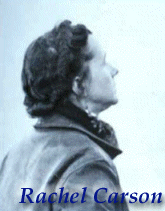 As a child, one of my earliest memories that the worldview of EuroAmerican science contained some fatal flaws was brought to my attention in the fall of 1964. It was then I first learned about the dangers of pesticides (just two year's after Rachel Carson's (1962) book
As a child, one of my earliest memories that the worldview of EuroAmerican science contained some fatal flaws was brought to my attention in the fall of 1964. It was then I first learned about the dangers of pesticides (just two year's after Rachel Carson's (1962) book
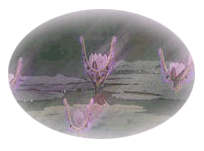 Remembering this primordial partnership, our biological coevolution with the web of life, is a human potential that all of us are capable of actualizing. Indeed "each time we bring together in conversation pieces that have been thought separated, a healing happens"
Remembering this primordial partnership, our biological coevolution with the web of life, is a human potential that all of us are capable of actualizing. Indeed "each time we bring together in conversation pieces that have been thought separated, a healing happens"
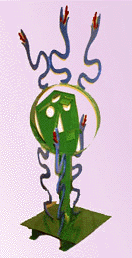 Hence we see the need to become familiar with the study and practice of shamanism, so that we can "experientially" understand what is being talked about here. Shamanism, as Nevill Drury tells us, "is really applied animism"
Hence we see the need to become familiar with the study and practice of shamanism, so that we can "experientially" understand what is being talked about here. Shamanism, as Nevill Drury tells us, "is really applied animism"
 Transpersonal psychology has been referred to as the "fourth force" in psychology, whose original focus and concern grew out of an interest in investigating "the ultimate human capacities and potentialities that have no systematic place in positivistic or behavioristic theory ("first force"), classical psychoanalytic theory ("second force") or humanistic psychology ("third force")
Transpersonal psychology has been referred to as the "fourth force" in psychology, whose original focus and concern grew out of an interest in investigating "the ultimate human capacities and potentialities that have no systematic place in positivistic or behavioristic theory ("first force"), classical psychoanalytic theory ("second force") or humanistic psychology ("third force")
 Contemplating these conclusions resulted in my becoming aware that, from a theoretical standpoint, the catalyst for this transformation of consciousness needs to begin with our conscious recognition and remembrance of humankind's co-evolutionary, symbiotic relationship with nature. From a practical and psychotherapeutic standpoint, I began to confront and express my own emotional anguish stemming from modernity's crisis of perception. This process of self-confrontation continues to assist me in examining the habits of my own lifestyle, thereby facilitating a deepening awareness of my own self-denial; a process that has allowed me to internalize the realization that it is my habitual grub-like consumption of fossil fuel energy and the products of our modern/postmodern culture that are responsible for the widespread destruction of all natural systems and the loss of my ability to commune with my earth-body. This realization lead me to begin experiencing a conscious act of grieving the loss of our relationship with nature.
Contemplating these conclusions resulted in my becoming aware that, from a theoretical standpoint, the catalyst for this transformation of consciousness needs to begin with our conscious recognition and remembrance of humankind's co-evolutionary, symbiotic relationship with nature. From a practical and psychotherapeutic standpoint, I began to confront and express my own emotional anguish stemming from modernity's crisis of perception. This process of self-confrontation continues to assist me in examining the habits of my own lifestyle, thereby facilitating a deepening awareness of my own self-denial; a process that has allowed me to internalize the realization that it is my habitual grub-like consumption of fossil fuel energy and the products of our modern/postmodern culture that are responsible for the widespread destruction of all natural systems and the loss of my ability to commune with my earth-body. This realization lead me to begin experiencing a conscious act of grieving the loss of our relationship with nature.
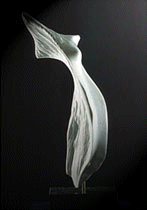 Ecopsychology and indigenous science can thus be understood as an emerging psychological awareness, and a growing cultural response, to the mark and wound of EuroAmerican science's imperialistic grasp for the control of a reality experienced as an external other comprised of isolated parts
Ecopsychology and indigenous science can thus be understood as an emerging psychological awareness, and a growing cultural response, to the mark and wound of EuroAmerican science's imperialistic grasp for the control of a reality experienced as an external other comprised of isolated parts
